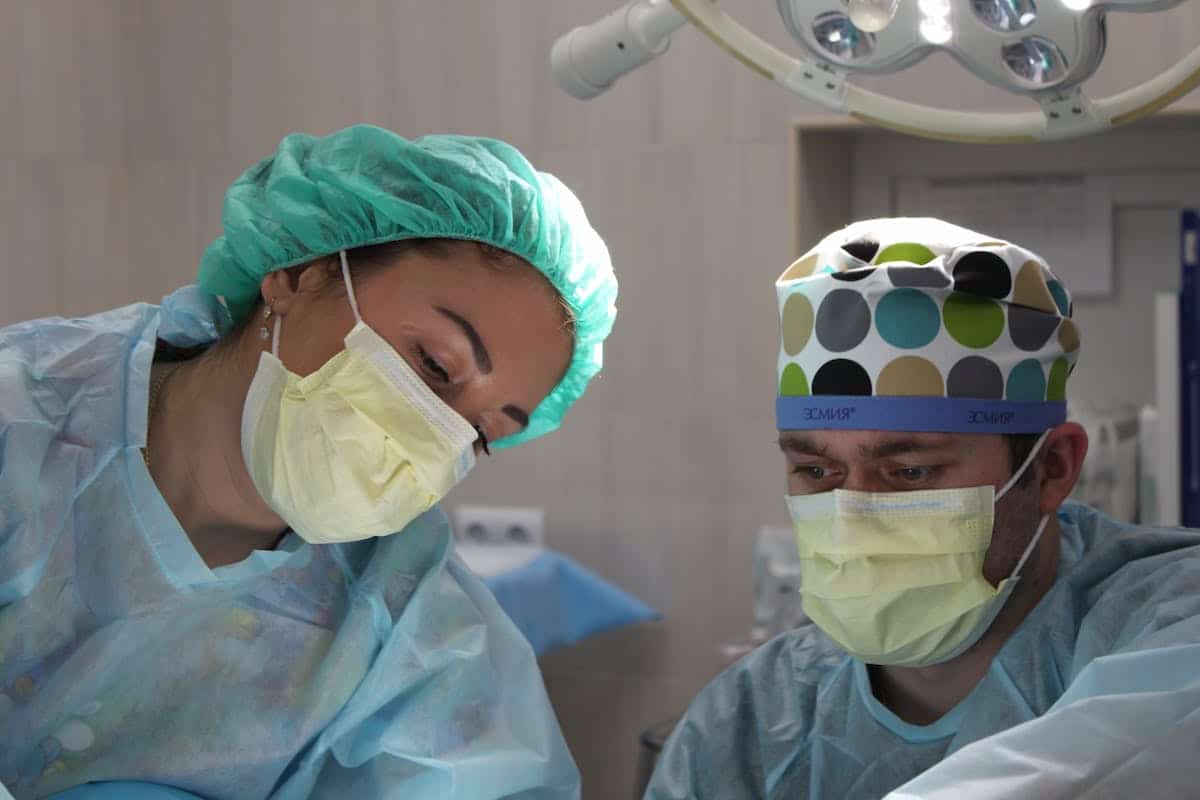The confluence of ancient Japanese ninja techniques with modern spine surgery may initially appear to be an unlikely pairing. Yet, upon closer examination, one can discern several parallels that may not only enrich our understanding of both fields but also open up innovative approaches to surgical procedures. The principles of stealth, precision, speed, adaptability, and resilience, integral to the ninja’s arsenal, can provide invaluable insights into enhancing surgical techniques, patient care, and recovery timelines in spine surgery. This intriguing intersection warrants a deeper exploration, promising a unique perspective that may revolutionize conventional surgical practices.
The Ninja Philosophy in Surgery
In the realm of spine surgery, the incorporation of the Ninja Philosophy necessitates a perfect blend of precision, stealth and meticulous attention to detail, just as a ninja would demonstrate in his covert operations. This philosophy is underpinned by two crucial principles: surgical adaptability and mindful preparation.
Surgical adaptability, the first tenet, requires a surgeon to be flexible, quick-thinking, and capable of making key decisions under pressure, just like a ninja adapting to unexpected challenges. It implies the ability to adjust surgical strategies on-the-spot, based on the patient’s unique anatomy and the intraoperative findings. This level of adaptability is often the determining factor between a successful and an unsuccessful surgery.
Mindful preparation, the second principle, involves comprehensive preoperative planning. Every detail, from the patient’s pathology to the surgical equipment needed, should be considered and prepared for. Similar to how a ninja meticulously plans his mission, a surgeon must anticipate potential complications and devise appropriate countermeasures.
Embodying these principles, the Ninja Philosophy transcends traditional surgical practices, pushing surgeons to be more adaptable, prepared, and detail-oriented. Ultimately, this approach aims to enhance surgical outcomes, ensuring patients receive the best possible care.
Mastering the Art of Stealth
Mastering the Art of Stealth in spine surgery entails a meticulous focus on precision in surgical techniques and innovative invisible recovery strategies. By integrating the precision akin to that of a master ninja, surgeons can enhance the accuracy and efficiency of their procedures, reducing potential risks and improving patient outcomes. Furthermore, invisible recovery strategies, borrowed from the ninja’s art of stealth, can provide a less noticeable, more comfortable post-operative experience for patients.
Precision in Surgical Techniques
While the art of stealth might be commonly associated with ninjas, it is equally vital in the realm of spine surgery, where surgical techniques must be executed with utmost precision and finesse. This precision, akin to the deftness of a ninja’s movements, is paramount when it comes to spine manipulation. The spine is an intricate structure, housing the body’s central nervous system. Any misstep or miscalculation could lead to irreparable damage. Surgical precision ensures that only the intended area is targeted, minimizing the risk of harm to surrounding tissues. It requires extensive knowledge, steady hands, and an acute understanding of the human anatomy. Like a ninja, the surgeon must be invisible to the patient, leaving no trace of their entry except for the successful resolution of the patient’s condition.
Invisible Recovery Strategies
Just as a ninja vanishes without a trace, the goal in spine surgery is to ensure a patient can recover with minimal visible signs of surgery and disruption to their daily life. This is where Invisible Recovery Strategies come into play, specializing in Posture Improvement and Pain Management. By incorporating specific exercises and movements, patients can enhance their posture, aligning their spine correctly to minimize discomfort and promote healing. In terms of Pain Management, a combination of medication, physical therapies, and mindfulness techniques are used to control and reduce pain levels. The strategic implementation of these methods aims to make the recovery process as unobtrusive as possible, thereby truly mastering the art of stealth in spine surgery recovery.
The Precision of a Samurai’s Sword
In the realm of spine surgery, the surgeon must incorporate the precision akin to that of a samurai’s sword, always ensuring meticulous accuracy in each movement. With Samurai precision and sword sharpness being the epitome of surgical finesse, these principles are vital in the operating theater where a fraction of a millimeter can make a significant difference.
- Samurai Precision: The samurai’s precision is not only about accuracy, but also about the ability to make the right decision at the right time. A surgeon must possess the same level of precision, making incisions at the exact right location and depth, while also deciding when to operate and when to adopt a wait-and-see approach.
- Sword Sharpness: The sharpness of a samurai’s sword represents the ideal tool in surgery. A sharp, perfectly maintained surgical instrument can ensure a clean cut, reducing tissue trauma and promoting faster healing.
- Consistency: Just as a samurai consistently maintains his precision and sharpness, a surgeon must consistently deliver high-quality care. Quality must not vary from patient to patient, or from procedure to procedure.
Speed: The Ninja’s Greatest Weapon
Building upon the samurai-inspired precision and consistency in spine surgery, it becomes essential to address the role of speed, often considered the ninja’s greatest weapon, in this intricate medical field. Speed, when combined with accuracy, can significantly enhance surgical outcomes, minimize recovery time, and improve patient satisfaction.
Swift incisions, a critical aspect of speed in spine surgery, are not merely about the physical quickness of the surgeon’s hand. Instead, they represent a comprehensive approach that begins with meticulous pre-operative planning, adopts efficient surgical techniques, and concludes with speedy yet careful post-operative care. Each of these stages requires a surgeon to possess not only technical prowess but also adept time management skills.
Time management, in this context, refers to the effective use of available surgical time, minimizing unnecessary delays and complications. This includes the swift identification and management of unexpected surgical findings, without compromising on the quality of care.
In essence, the ninja’s speed in spine surgery is a harmonious blend of swift incisions and effective time management. It is a testament to the surgeon’s dexterity, foresight, and adaptability, demonstrating that speed, like the ninja, is both a weapon and a shield in the battle against spinal ailments.
Leveraging Patience in Spine Surgery
In the realm of spine surgery, the virtue of patience can be as sharp and effective as any surgical instrument. The importance of patience is multifaceted, playing a crucial role not only during the surgical process but also throughout the patient’s recovery journey. A careful balance of speed and patience can significantly influence the outcomes of spine surgery, leading to safer procedures and more successful recoveries.
Importance of Patience
Exercising patience is a critical virtue in spine surgery, enabling surgeons to meticulously navigate through complex procedures while minimizing potential risks and complications. This surgical serenity, combined with patient endurance, is essential to successful outcomes.
The importance of patience in spine surgery can be underlined by the following three points:
- Precision: Patience is key to maintaining the high levels of precision required in spine surgery. The margin for error is minuscule, and rushing can lead to severe complications.
- Adaptability: Every patient is different; surgeons need patience to adapt to each unique situation and adjust their approach accordingly.
- Recovery: Postoperative healing is a gradual process. Surgeons must exercise patience, allowing the body to recover at its own pace to ensure the best possible outcome.
Patience in Recovery Process
Navigating the labyrinth of postoperative recovery in spine surgery, patience emerges as a crucial ally, facilitating the slow yet sure healing process, and ensuring optimal patient outcomes. An effective recovery mindset, imbued with patience, supports the acceptance of gradual progress and aids in effective pain management. A patient’s recovery journey can be punctuated by setbacks and discomfort; however, these challenges can be surmountable with a patient and persistent attitude. Pain management, a cornerstone of postoperative care, relies heavily on a patient’s patience and understanding of their unique recovery timeline. With the right mindset, patients can effectively navigate the postoperative period, mitigate pain, and contribute to their healing. Patience, therefore, is not merely a virtue in spine surgery recovery but an essential recovery tool.

Understanding Surgical Smoke Bombs
Surgical smoke bombs, a complex and critical tool in spine surgery, require a deep understanding of their functionality and application to ensure optimal patient outcomes. These devices, which add a layer of mystique to the surgical procedure, are utilized to provide visual obfuscation, thereby enhancing the surgeon’s control and precision during operation.
- Smoke Utilization: Smoke bombs produce a thick smoke screen that obscures the surgical site. This allows the surgeon to manipulate the patient’s perception of pain and discomfort, and focus on the crucial aspects of the surgery.
- Surgical Mystique: The smoke screen not only provides a physical barrier but also plays a psychological role, creating a sense of mystery and intrigue around the procedure. It can also serve as a distraction, allowing the surgeon to perform intricate maneuvers unnoticed.
- Patient Outcome: Despite the seemingly theatrical nature of smoke usage, it is a strategic tool designed to ensure the best possible patient outcomes. By controlling visibility and perception, surgeons can perform delicate operations with increased accuracy and minimal patient discomfort.
Unseen Movements: The Ninja Walk
The ‘Ninja Walk’ is an unseen movement technique with potential parallels to the precision required in spine surgery. This approach, which centers on mastering stealthy steps, offers a distinct set of benefits that can be applied in the surgical arena. Our discussion will focus on the intricacies of these steps and the potential advantages they could bring to spine surgery procedures.
Mastering Stealthy Steps
Often underestimated, the art of mastering stealthy steps, known as the ‘Ninja Walk,’ plays a crucial role in ensuring the success of spine surgery procedures. This technique, akin to the unseen movements of a ninja, relies heavily on the use of stealth equipment and the skillful manipulation of surgical shadows.
- Stealth Equipment: These specialized tools enable surgeons to navigate through the complex anatomy of the spine with minimal disruption, thereby reducing post-operative pain and recovery time.
- Surgical Shadows: The strategic use of light sources and angles to cast shadows that highlight certain anatomical structures, assisting in precise navigation and minimizing harm to surrounding tissues.
- Ninja Walk: The surgeon’s controlled, deliberate movements, mimicking the stealthy steps of a ninja, which allow for precision and decreased surgical invasiveness. This is the embodiment of the surgeon’s skill, experience, and expertise.
Benefits of Ninja Walk
Employing the Ninja Walk technique in spine surgery offers a multitude of benefits, most notably enhanced precision, reduced invasiveness, and improved patient recovery times. This method, characterized by gentle movements, promotes a level of finesse that is seldom achieved by traditional surgical techniques. The Ninja Walk’s underpinning philosophy of injury avoidance ensures better patient outcomes by minimizing potential post-operative complications. The technique’s inherent focus on subtle, unseen movements aids in reducing tissue trauma, thereby speeding up healing times. Additionally, the Ninja Walk’s emphasis on precision helps to avoid unnecessary damage to surrounding structures, further enhancing surgical outcomes. Thus, the employment of this technique in spine surgery presents a paradigm shift towards more efficient, patient-centric surgical practices.
Quick Recovery: The Ninja’s Resilience
Emulating the resilience of a true ninja, patients can expect a swift healing process post-spine surgery, thanks to the advanced surgical techniques employed. The key factors contributing to this are Resilience Training and Quick Adaptability.
- Resilience Training: This is a critical aspect of preoperative preparation. A patient’s mental and physical resilience is honed, enabling them to better cope with the surgery and its aftermath. It incorporates strengthening exercises, mental conditioning, and dietary adjustments to enhance overall resilience.
- Advanced Surgical Techniques: The use of minimally invasive techniques, precision laser surgery, and state-of-the-art technology reduces tissue damage, blood loss, and hospital stay, significantly decreasing recovery time.
- Quick Adaptability: Postoperatively, patients are guided through a personalized recovery plan. This plan encourages quick adaptability to return to normal life and activities, further speeding up the healing process.
In this respect, a well-prepared patient, much like a ninja, can bounce back from spine surgery with impressive speed and minimal discomfort. With the right mindset, preparation, and medical care, the road to recovery can be remarkably swift and smooth. These ‘ninja tricks’ in spine surgery ensure a resilient and quick recovery, truly embodying the ninja’s resilience.
Ninja’s Deception Techniques in Surgery
Just as the resilience and quick adaptability are paramount in post-operative recovery, the art of deception, a skill adeptly used by ninjas, also finds its place in modern spine surgery, contributing to successful surgical outcomes. This strategy, comprising surgical illusions and hidden techniques, is no less relevant in the theatre suite than it is in martial arts.
Surgical illusions, for instance, involve tactics such as the use of minimally-invasive procedures. These techniques often leave smaller scars, creating the illusion of less invasive intervention, which can psychologically influence a patient’s perception of pain and recovery time. Additionally, the application of hidden techniques, such as percutaneous pedicle screw fixation, can significantly enhance the surgical outcome while minimizing perceived invasion and tissue damage.
The ninja’s art of deception also extends to the surgical team’s communication and management during the procedure. By maintaining a calm demeanor, underplaying complications, and strategically managing the patient’s expectations, surgeons can construct a more controlled and less stressful environment. This, in turn, can lead to improved patient confidence, satisfaction, and ultimately, better post-operative recovery.
In essence, by incorporating the ninja’s deception techniques, spine surgery can achieve not only successful surgical results but also enhanced patient experiences.

Adapting to Change: The Ninja Way
In the fluid realm of spine surgery, the ability to adapt to change—a trait characteristic of the ninja’s modus operandi—plays a crucial role in tackling unexpected surgical challenges and enhancing patient outcomes. This process, referred to as ‘Adaptive Flexibility,’ is the essence of the ‘Change Embrace’ approach, which finds its roots in the traditions of the elusive ninja.
- Adaptive Flexibility in Practice: In the operating theatre, surgeons may encounter unforeseen complications. Rather than rigidly sticking to the initial plan, a surgeon, like a ninja, must adapt their strategies to ensure the best patient outcomes. This could involve employing new surgical techniques or adjusting the course of the procedure in real-time.
- Change Embrace in Medical Technology: The medical field is in constant evolution, with new technologies emerging regularly. A ninja-like approach to change sees surgeons embracing these innovations, integrating them into their practice to enhance patient care.
- Patient-Centric Adaptation: Each patient is unique, requiring a personalized approach to care. Emulating the ninja’s adaptability, surgeons must tailor their methods to fit the individual needs of each patient.
Thus, in the world of spine surgery, the ninja’s adaptability is not just a trick, but an essential skill for success.
Silent Communication in the Operating Room
Drawing on the concept of adaptability in spine surgery, another crucial ninja-like attribute that significantly contributes to surgical success is the ability to communicate silently within the bustling environment of the operating room. This is often achieved through non-verbal cues and surgical codes, increasing efficiency and reducing potential misunderstandings.
Non-verbal cues, such as subtle hand gestures, facial expressions, and body language, are critical for conveying messages without interrupting the ongoing procedure. For instance, a surgeon might gently tap on a particular instrument to indicate its need, or a nod could confirm a successful step in the surgery.
Surgical codes are pre-determined signals or words that carry specific meanings within the surgical team. Akin to military codes, these signals ensure a smooth flow of communication with minimal verbal exchanges. For example, ‘Code Blue’ universally denotes a medical emergency requiring immediate attention.
Effective silent communication helps maintain the sterility and concentration in the operating room, allowing surgeons to focus entirely on the intricate task at hand. Like a ninja, the surgeon maneuvers through the surgery with swift precision, guided by a network of silent messages. Hence, mastering this silent communication is a quintessential ninja trick in spine surgery.
Frequently Asked Questions
What Are the Risks and Complications Associated With Ninja-Inspired Spine Surgery?
While incorporating ninja training regimens may improve surgical precision, risks and complications can include increased training time, potential for unconventional methods, and a need for comprehensive understanding of these techniques to avoid surgical errors.
Is the Recovery Time After a Ninja Spine Surgery Different From Traditional Spine Surgeries?
Recovery time post-surgery depends on numerous factors including surgical precision and post-operative care. However, it is generally comparable between traditional spine surgeries and those employing advanced techniques, barring complications or specific patient conditions.
How Long Does It Take to Master the Techniques of Ninja Spine Surgery?
Mastering any specialized surgical technique, such as those in spine surgery, depends on multiple factors. Training duration varies, but skill acquisition typically requires several years of focused practice and ongoing learning in this highly technical field.
How Does the Cost of Ninja Spine Surgery Compare to Traditional Methods?
The cost comparison between traditional spine surgery and methods incorporating new technological advancements depends on various factors including insurance coverage implications. It’s crucial to evaluate both the financial and health outcomes when considering different surgical techniques.
Are There Specific Conditions or Types of Patients That Are Best Suited for Ninja Spine Surgery?
Certain conditions, particularly those requiring intricate spinal manipulation, may benefit from the advancements in surgical techniques inspired by Ninja Training Requirements. These Spine Surgery Innovations offer precision and potentially less invasive options for specific patient profiles.

